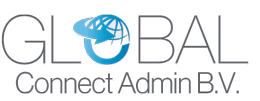While the Dutch society needs to deal with new nitrogen regulations, the European Commission has hardly any insights into the nitrogen problems in the individual EU member countries. While these countries do no research or are not sharing information regarding nitrogen, the approach in regulations differs from country to country. How does this work while all living in the European Union?
Utilizing handkerchiefs and the reversed Dutch flag (blue-white-red), farmers and their aficionados show their displeasure with the new nitrogen regulations. The Netherlands, which is according to the experts the country with the greatest nitrogen problem, is also the only country that is consistently reporting these figures. In the EU, passing on nitrogen figures is not mandatory and is therefore not linked to a fine. In the case these figures are present, the “culprit” for the nitrogen crisis can be identified and thus extra regulations can be made.
Every six years, EU countries are required to assess the quality of the Natura 2000 protected areas. This way, the threats to nature are identified and the data is shared with the European Commission. In the latest report in 2022, it is argued that Dutch nature is doing bad and even worse than the other EU countries. While the quality of Nature 2000 protected areas is used to form this conclusion, the reported nitrogen data by the Netherlands also played a huge role in determining the effect of nitrogen on these protected areas.
According to Van der Sluis, Wageningen University and contributor to the reports on behalf of the European Commission, other Western countries have similar nitrogen problems. However, these countries do not report “nitrogen” in the same manner or the same amount of information. These countries most often report on “agriculture” and “fertilisation”. In general, it is argued that the consequences of nitrogen in the EU are therefore underestimated. EFRAG aims at motivating the agricultural sector to participate in sharing CSR data. In the future, this might become mandatory for specific enterprises.
While the overarching picture remains partly unclear, Van der Sluis argues that the nitrogen problem in the Netherlands is remarkably evident. Due to the intensive livestock farming, as Van der Sluis continues, the 2020 report states that 88% of Dutch nature is identified as “moderate” or “poor” condition. However, the arbitrarily of the figures and the lack of shared information makes the issue difficult to assess. For example, when an EU country shared the issues or presence of “agriculture” but lacks the division between “nitrogen” or “fertilization”, the impact of nitrogen is unclear. This is linked to the recognition or the ignorance of the nitrogen crisis.
Due to consistently sharing data regarding nitrogen, the situation in the Netherlands now has become a nitrogen crisis. Since the agricultural sector, in special the livestock farmers, are the leaders in nitrogen emissions, regulations are made by the Dutch government. These regulations can have the form of an emission counter on the farms, or scaling the farm/livestock down. The regulations can vary on the state of the nitrogen emissions in that specific area.
One might argue to stop sharing the nitrogen data with the European Commission. However, lawyers emphasise that the Netherlands cannot suddenly halt sharing this information While other countries refrain, De Graaf, professor of administrative law and sustainability at University Groningen, argues that it does not mean that the Netherlands can ignore this problem. De Graaf emphasises that “once you have the data, you know what to do. You cannot suddenly delete it.”
To conclude, European countries often have missing or incomplete data regarding the protected nature areas and/or nitrogen emissions. While the Netherlands report all the data accurately, eleven countries skip the assessment of these protected areas and twelve countries do not report the threats to the protected wildlife. In retrospect, the Netherlands create new and strict regulations (mainly for the agricultural sector) to tackle the nitrogen crisis, while just across the border in Germany this problem is unexistent. This showcases the difference in approach under the common denominator of the European Union.
Sources:
https://nos.nl/artikel/2441696-veel-eu-landen-rapporteren-cijfers-stikstof-niet-aan-brussel
https://www.ft.com/content/90e38fb5-e942-4afd-994d-048dc40579a2
https://www.eea.europa.eu/publications/state-of-nature-in-the-eu-2020



